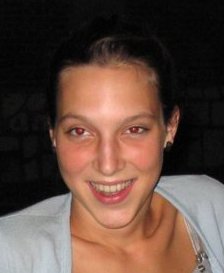Mrs C. (Caroline) Tolla

Dynamical modelling of bacterial communities and their
interaction with the organic matter, in marine sediments
Introduction
The marine sediments are characterised by the coexistence of oxic and
anoxic areas where degradation processes are different. The organic
matter degradation in these sediments is faster in heterogeneous than
in homogeneous environment. This results is obtained from experiments
in laboratory where the degradation velocity is measured in oxic
(oxygen saturation), anoxic and oscillating conditions (oxic and
anoxic mixing). We have developed a model allowing to put in an
obvious this result and suggesting some explaining mechanisms.
Aim of study
The aim of this study is to better apprehend the organic matter fate
in the sedimentary column, by modelling the mechanisms and velocities
of the organic matter transformation/mineralization, dependent on the
environmental conditions (i.e. presence or absence of oxygen). More
precisely, we set out to improve the usual dynamical models of
bacterial communities.
Methods
Firstly, a comparative study, between classical models of bacterial
dynamic, has been realised through a fit to a set of data concerning
the Pseudomonas nautica strain. We have constructed a mechanistic
model of bacterial dynamic based on the DEB theory allowing a
description of biological behaviour in order to study various
environmental conditions.
More precisely, this model was improved thanks to a new mathematical
formulation allowing the description of the electron acceptor
inhibition by the presence of another one. Notably, we have studied
the inhibition of denitrification process by the presence of oxygen,
where some others usual mathematical relations are particular
cases. This work leads to a publication, published in Acta
Biotheoretica (Talin et al., 2003). On the other hand, we applied this
new inhibition formulation to the maintenance process. Indeed, a best
description of this last process can take its importance in a spatial
and temporal variable environment. A publication is in preparation
that we will submit to the Journal of Theoretical Biology (Tolla et
al., in prep).
The complete model construction based on the DEB theory:
This really important step consists in constructing a model that will
answer to the initial problem. In this case, we want to represent, as
better as possible, the bacterial dynamic in variable environmental
conditions. This model, based on the DEB theory, describes the dynamic
of bacterial communities through the assimilation, growth and
maintenance processes of the community at the individual scale. The
processes description is at the enzymatic scale, associated to the
organic matter degradation in marine environment. One of the
advantages of the DEB theory, comparing to the classical bacterial
models, is of respecting the conservation mass law. Some simulations
have been realised with the Matlab and Octave softwares, in order to
analyse the qualitative behaviour of the solutions of model equations.
The new mathematical inhibition formulation:
The new formulation is based on the enzymatic kinetics subjacent to
the studied process. A first application was realised for the
maintenance process (continuous use of energy necessary for the
organism care) which is preferentially realised from mobile and
available material than from structural material. This preferential
use was redrawn by a new formulation, following on from a mathematical
and numerical study. The softwares used are Octave and Matlab
concerning the simulations and fitting to a set of data, and
Mathematica for the steady state expression.
This is the symposium that concludes my project:
